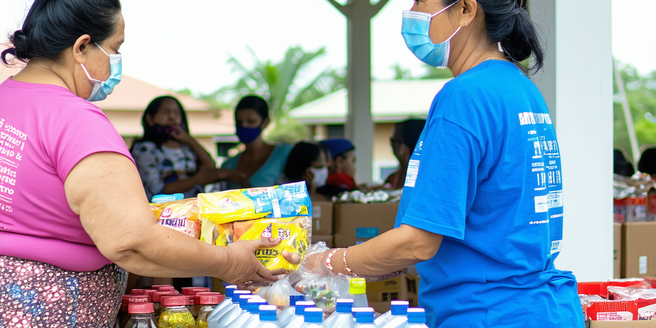Understanding TANF: An Overview of Benefits
Temporary Assistance for Needy Families (TANF) is a federally funded program designed to help low-income families regain self-sufficiency. It provides cash assistance to eligible families, helping them meet basic needs such as food, housing, and child care. TANF is structured to support work participation, requiring recipients to engage in job training or work-related activities. Though the primary goal is to promote self-sufficiency, TANF also offers access to supportive services like job readiness and child care support. Families must meet specific criteria to qualify, including income limits and family size. TANF’s short-term aid aims to transition families from welfare dependency to gainful employment, fostering economic stability.
The Intersection of Domestic Violence and Financial Support
Domestic violence survivors often face unique financial challenges when escaping an abusive environment. Financial support is crucial for their independence, especially when securing safe housing, childcare, and employment. Programs like TANF can offer vital assistance during this transition, providing monetary support to cover essential living expenses. It is important to recognize that financial dependence is often a barrier for survivors wishing to leave abusive situations. A well-structured financial support system can empower survivors to rebuild their lives without returning to harmful relationships. Addressing these financial needs holistically ensures that survivors have the resources and support to move forward safely.
How TANF Supports Domestic Violence Survivors
TANF includes provisions to aid domestic violence survivors through its Family Violence Option (FVO). This allows states to offer support tailored to the needs of survivors, such as exemptions from work requirements and extending benefits. Special considerations are made to ensure that survivors who receive support can prioritize safety and stability. By offering these tailored services, TANF recognizes the complex realities faced by those escaping abusive situations. This support is vital in helping survivors access crucial resources, from safe housing to legal advice, enabling them to begin a new chapter without the financial constraints that might otherwise hinder their progress.
Challenges Faced by Domestic Violence Survivors in Accessing TANF
Despite available resources, domestic violence survivors may encounter obstacles in accessing TANF. These challenges include bureaucratic hurdles, a lack of awareness about available options, and difficulties in meeting certain program requirements. Survivors may also face the stigma associated with welfare programs, which can be discouraging. Additionally, logistical issues such as lack of transportation or documentation can hinder application efforts. Understanding these barriers is essential to improving access and effectiveness of TANF for survivors. By identifying and addressing these challenges, TANF can become more accessible and supportive for those in need, ensuring that survivors receive timely assistance.
Collaboration Between TANF Programs and Domestic Violence Services
Collaboration between TANF administrators and domestic violence service providers is essential for offering comprehensive support. Integrated services facilitate seamless access to resources, combining financial aid with counseling, housing, and legal assistance. This holistic approach empowers survivors to rebuild their lives with dignity and security. These partnerships ensure that the immediate and long-term needs of survivors are met more effectively. By coordinating efforts, service providers can create a safety net that not only addresses financial needs but also focuses on the survivor’s overall well-being. Such collaboration enhances transparency and accountability, paving the way for a more responsive TANF system tailored to the challenges faced by survivors.
Future Directions: Improving TANF for Domestic Violence Survivors
As we look to improve TANF for domestic violence survivors, several key areas require attention. Enhancing awareness and outreach can inform more survivors about the resources available to them. Streamlining processes to reduce bureaucratic barriers is crucial. Integrating more flexible and responsive services within TANF can better address the varied needs of survivors. Additionally, legislative adjustments may be needed to expand protections and support mechanisms within TANF. Future strategies should prioritize safety, autonomy, and empowerment for survivors, ensuring that programs are adaptable to individual circumstances and offer robust support towards self-sufficiency and healing.



